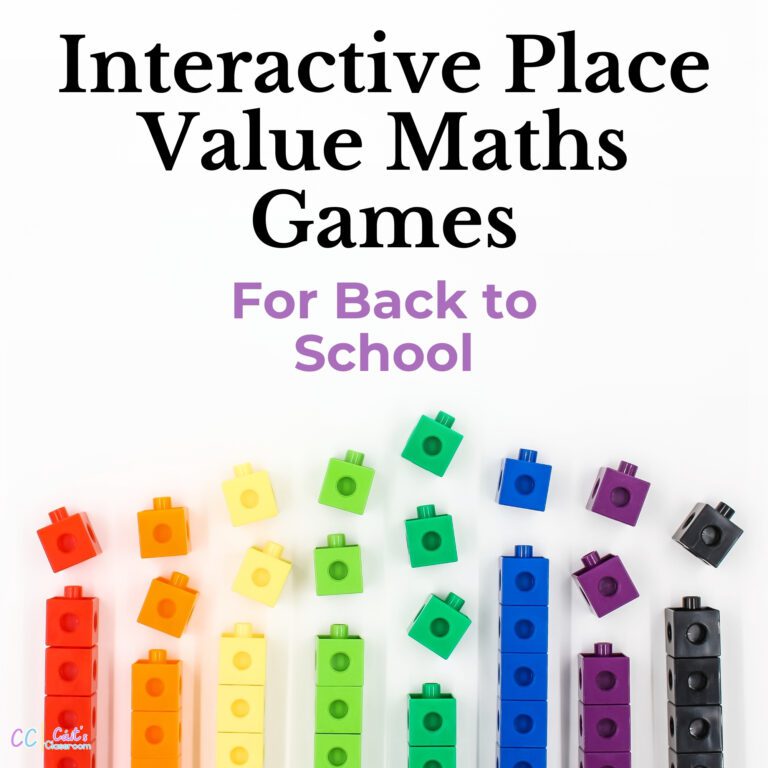The Back to School season is a time for new beginnings, fresh starts, and getting to know each other. Why not make it fun and engaging with some interactive maths games? These games will help your 3rd-6th class students build their maths skills, learn more about you and each other, and create a positive mathematical learning environment from their first week back.
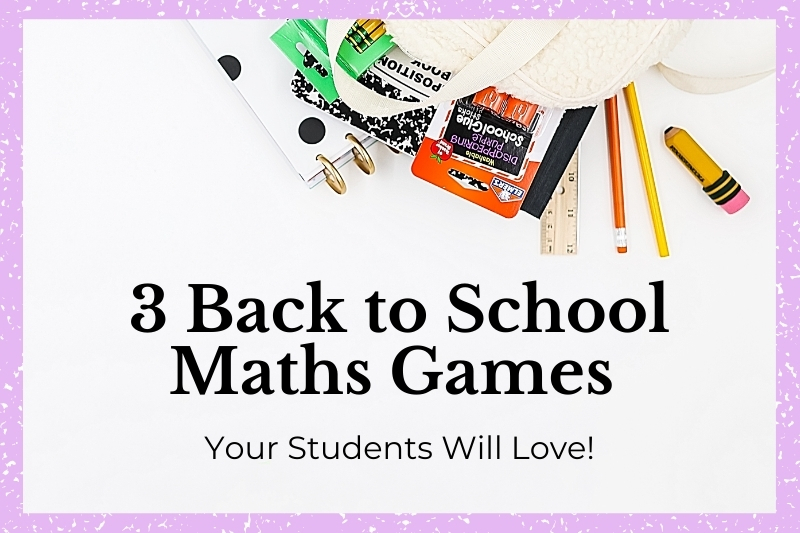
Guess the Teacher’s Number: A Classic Back-to-School Game
“Guess the Teacher’s Number” is a classic Back to School game that’s a great way to kick off the year and get your students having fun with maths. It’s simple, requires no prep, and is an easy way to help them learn about you while practising their logical thinking skills.
Here’s how it works: You choose a number related to your personal life, like your age, the number of siblings you have, or how many years you’ve been teaching. Then, your students take turns asking yes-or-no questions to try and guess the number. They can use maths concepts like “greater than” or “less than” to narrow down the possibilities. For example, they might ask, “Is the number greater than 20?”, “Is the number divisible by 5?”, or “Is the number a prime number?”
To make it even more engaging, divide the class into teams and award points for correct guesses. You can also have a simple prize system for the winning team. Remember to keep the game lighthearted and encourage participation, celebrating correct guesses and helping students understand the reasoning behind each question. This game is a fun way to come back to school on a positive note and help your students develop their maths skills in an enjoyable and interactive way!
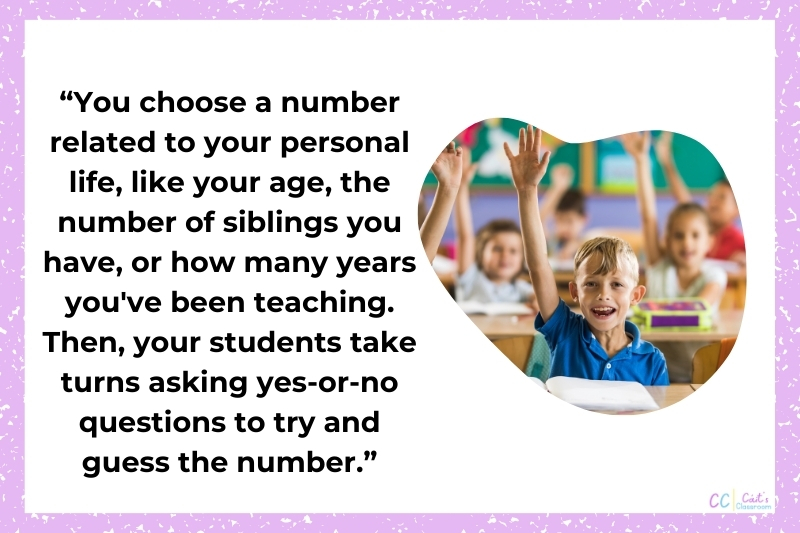
Find Your Name Number: Unveiling the Hidden Numbers in Names
In this fun, Back to School activity, your students will explore the hidden numbers within their names! First, you’ll assign a numerical value to each letter of the alphabet. There are a few different systems you can use, but a simple one is to assign numbers 1-9 sequentially to the letters of the alphabet, repeating the sequence as needed. For example, assign numbers 1-9 to the letters A-I, 1-9 again for J-R, and so on.
Once you’ve established your system, have your students create a chart with their name and the corresponding number values for each letter. Then, they can add up all the numbers in their name to find their “name number.” You can add more complex steps for fifth and sixth class students, like multiplying the first two numbers in their name or dividing the last number by 2.
To make it more interactive, have your students calculate their name numbers together as a class. They can compare their results and discuss any patterns or similarities they find.
This activity is a great way to help your students practise basic operations and work with numbers in a fun and creative way. It also introduces them to (or, in some cases, revises) the concept of assigning numerical values to letters.
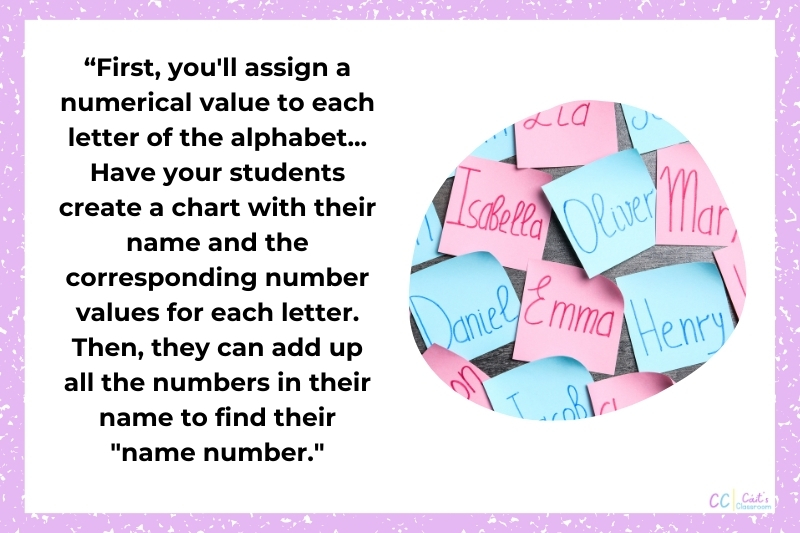
Number Story Chain
“Number Story Chain” is a great way to help your students get to know each other while practicing their maths skills. It’s an easy and lively activity that encourages them to share personal details using simple maths concepts.
Here’s how to play: You start by sharing a simple sentence about yourself that includes a number, like “I have 2 cats.” Then, each student adds a sentence to the story that includes a number and relates to their own life. For example, the next student might say, “I have 3 dogs, so that means we have 5 pets in total!” The story continues, with each student adding a sentence that builds on the previous one and incorporates a number.
Encourage older students, or students who need a challenge, to be creative with their sentences and use different maths concepts. For example, they could use subtraction, multiplication, or division or even incorporate basic fractions, decimals or percentages!
This activity is a great way to create a sense of community in your classroom and help your students practise their math skills in a fun and engaging way! Consider making it a team effort by dividing the class into small groups and have each group create their own number story chain. This will encourage that all-important collaboration and teamwork in the first week back to school.
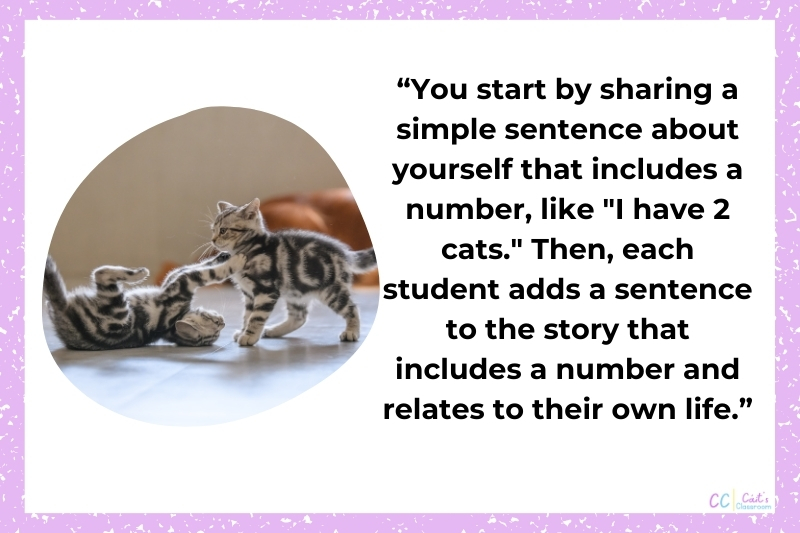
Making Maths Games Work for You
These Back to School maths games are perfect for new teachers as they are zero prep and require minimal resources, making them super easy to set up and play. They can also be easily adapted to different class levels and learning objectives. For younger students or students who struggle with maths, focus on basic maths concepts and simpler questions. For older students or students who need a challenge, you can introduce more advanced problems and concepts where appropriate.
By incorporating these interactive and engaging maths games into your Back to School activities, you can create a positive learning environment that fosters a sense of community and helps your students develop their maths skills from week one. Remember, maths can be SO much fun, and these games are a great way to make it so!

